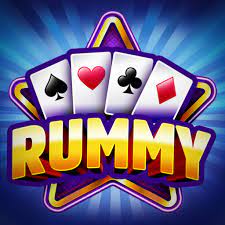Title: Rummy: A Classic Card Game of Strategy and Skill
In the realm of card games, few possess the enduring appeal and strategic depth of Rummy. Originating in the early 20th century, Rummy has captured the hearts of players worldwide with its blend of luck, skill, and fast-paced gameplay. From casual gaming nights with friends to competitive tournaments, Rummy offers an immersive experience that challenges players to think critically, plan strategically, and adapt to ever-changing circumstances. Let’s delve into the rich history, rules, and strategies that define this timeless card game. Also Download Rummy Wealth

Origins and Evolution
The exact origins of Rummy are shrouded in mystery, with various theories tracing its roots to different parts of the world. Some believe that Rummy evolved from a Chinese game called Mahjong, while others speculate that it originated in Mexico or Europe. Regardless of its precise origins, Rummy gained popularity in the United States during the early 20th century and has since become a beloved pastime enjoyed by millions of players worldwide.
Rules of the Game
- Objective: The primary goal of Rummy is to form valid sets and sequences by melding cards from your hand. A set consists of three or four cards of the same rank, while a sequence comprises three or more consecutive cards of the same suit.
- Deck and Players: Rummy is typically played with a standard 52-card deck and two to six players, depending on the variant being played.
- Dealing and Gameplay: At the beginning of the game, each player is dealt a predetermined number of cards from the deck. The remaining cards are placed face-down to form the draw pile, with one card face-up next to it to start the discard pile. Players take turns drawing cards from the draw pile or the discard pile, melding sets and sequences, and discarding unwanted cards.
- Ending the Game: The game ends when a player successfully melds all of their cards into valid sets and sequences, at which point they declare “Rummy” and win the round. Alternatively, the game may end when the draw pile is exhausted, and no player can make any further melds.
Strategies for Success
- Observation: Pay close attention to the cards being drawn and discarded by your opponents, as this can provide valuable insight into their strategies and the cards they need.
- Risk Management: Strike a balance between forming melds and holding onto valuable cards. While it’s essential to meld cards to reduce your hand size, be mindful of the cards you discard, as they may benefit your opponents.
- Focus on Sequences: Prioritize forming sequences early in the game, as they require consecutive cards and are more challenging to achieve than sets. Sequences also offer greater flexibility in terms of gameplay and strategy.
- Discard Wisely: When discarding cards, prioritize high-value cards that are unlikely to benefit your opponents. Be strategic in your discards to minimize the risk of inadvertently helping your opponents form melds.
Variations and Adaptations
Over the years, Rummy has spawned numerous variations and adaptations, each with its own unique rules and nuances. Popular variants include Indian Rummy, Gin Rummy, Rummy 500, and Canasta, among others. These variations add complexity and diversity to the game, ensuring that players always have new challenges to explore and master.
Conclusion: A Game of Skill and Strategy
Rummy stands as a testament to the enduring appeal of card games, captivating players with its blend of luck, skill, and strategy. Whether played casually among friends or in competitive tournaments, Rummy offers a rich and immersive gaming experience that rewards careful observation, strategic planning, and adaptability. As players continue to explore the depths of this timeless game, Rummy remains a cherished pastime that brings people together in the spirit of camaraderie and friendly competition. Also Download Teen Patti Master
























